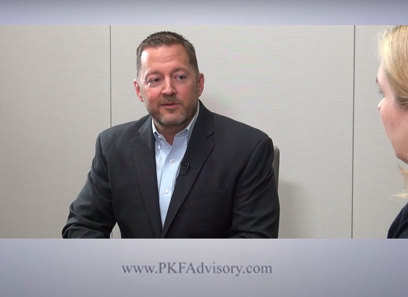The M&A Outlook: Economic Factors That Could Transform Mergers and Acquisitions
The M&A Outlook: Economic Factors That Could Transform Mergers and Acquisitions
Blog Article
Understanding the Fundamentals of Mergers and Acquisitions for Business Growth
Mergers and acquisitions (M&A) stand for crucial tactical decisions for organizations seeking to boost their affordable positioning and drive development. Understanding the subtleties of different merger types-- straight, upright, and conglomerate-- acts as a foundation for straightening and recognizing potential synergies with corporate purposes. Nonetheless, the path to successful M&A is fraught with obstacles that require precise preparation and execution. As companies browse this complicated landscape, the details of the M&A procedure and the principals entailed become critical to accomplishing preferred end results. What elements inevitably figure out success or failing in these transformative undertakings?
Interpretation of Mergers and Acquisitions
Mergers and procurements (M&A) stand for strategic transactions where companies combine their procedures to enhance growth, market share, or affordable benefit. A merger usually includes 2 firms coming with each other to form a brand-new entity, commonly with a shared vision and shared benefits. On the other hand, a purchase occurs when one business purchases an additional, thinking control and incorporating its operations into the purchaser's structure.
These purchases are driven by numerous motivations, including the need to accomplish economies of range, expand item offerings, go into new markets, or acquire cutting-edge innovations. M&A task is a crucial element of business strategy, allowing firms to adjust to changing market problems and react properly to competitive stress.
Moreover, successful M&A transactions require detailed due diligence, careful arrangement, and reliable combination preparing to recognize the awaited harmonies. The complexity of these deals highlights the value of lawful, financial, and operational considerations, in addition to the demand for alignment in between the company cultures of the combining entities - M&A. Ultimately, M&A functions as a powerful device for firms looking for to place themselves for lasting growth and boosted earnings in an ever-evolving organization landscape
Kinds Of Mergers and Acquisitions
While the landscape of procurements and mergers encompasses a variety of techniques, they can mainly be categorized right into a number of distinctive types based on their nature and purposes. One of the most common kinds include straight, vertical, corporation, and market-extension mergings.
Straight mergings take place in between business operating in the exact same sector and at the exact same phase of production. This kind intends to settle market share and minimize competition. Upright mergings, on the other hand, entail business at various stages of the supply chain, enabling for improved performance and control over manufacturing processes.
Corporation mergers entail firms from unassociated industries, focused on branching out product or getting in brand-new markets, thus minimizing risk exposure. Market-extension mergers happen in between business in various geographical markets however within the exact same market, enabling them to expand their consumer base and improve market reach.
Each kind of merging or purchase offers unique critical purposes and can considerably affect the resulting organization's functional characteristics, market setting, and growth trajectory. Understanding these categories is crucial for organizations considering M&A as a pathway for development and competitive advantage.
Principal in M&A

Investment bankers play a critical duty, functioning as intermediaries who promote arrangements and provide evaluation insights. Their experience assists both parties browse complicated economic landscapes, making certain fair and fair terms. Legal advisors are also necessary, as they make sure compliance with regulative frameworks and handle danger by drafting and reviewing agreements.
Additionally, monetary analysts assess the monetary health of both entities, identifying synergies and projecting post-merger efficiency. Company growth teams within firms are accountable for strategizing and recognizing prospective targets on procurement approaches.
M&A Refine Review
The process of procurements and mergers (M&A) generally includes a number of distinct stages that require careful preparation and execution. The process begins with tactical preparation, where companies determine their goals and goals for the M&A, such as market growth or diversity. This is adhered to by target recognition, throughout which prospective acquisition targets or merging partners are researched and evaluated for compatibility.
When ideal prospects are recognized, the due persistance stage begins. This vital action includes a thorough evaluation of the target business's financials, operations, and legal standing to recognize any possible threats. After due persistance, the settlement stage occurs, where the terms of the deal, including price and structure, are discussed and set.
The integration phase takes place, where the business function to combine their procedures, systems, and cultures efficiently. Effective combination is why not check here vital for realizing the prepared for harmonies and advantages from the M&A.
Advantages and Obstacles of M&A
Recognizing the capacity for growth and boosted market share, companies typically go after mergers and procurements (M&A) to exploit on tactical benefits. The primary benefits of M&An include boosted operational effectiveness, broadened product offerings, and accessibility to new markets.
Nevertheless, the difficulties linked with M&A are substantial. The financial implications can be daunting; the prices of the acquisition process, including lawful costs and due diligence, can be significant.
Additionally, regulatory analysis can complicate the M&A landscape, calling for companies to navigate complicated legal needs. In summary, while M&A can be an effective device for development, business have to consider the possible benefits versus the integral difficulties to guarantee successful combination and lasting value production.
Conclusion

Mergers and procurements (M&A) represent tactical purchases where business combine their operations to enhance growth, market weblink share, or affordable advantage - M&A. Ultimately, M&A serves as an effective tool for firms seeking to place themselves for lasting growth and boosted productivity in an ever-evolving service landscape
At the forefront are the acquirers and target companies, whose strategic objectives drive right here the inspiration for M&A. The process starts with strategic planning, where firms determine their objectives and objectives for the M&A, such as market expansion or diversification.Recognizing the possibility for growth and boosted market share, business often pursue acquisitions and mergings (M&A) to utilize on tactical advantages.
Report this page